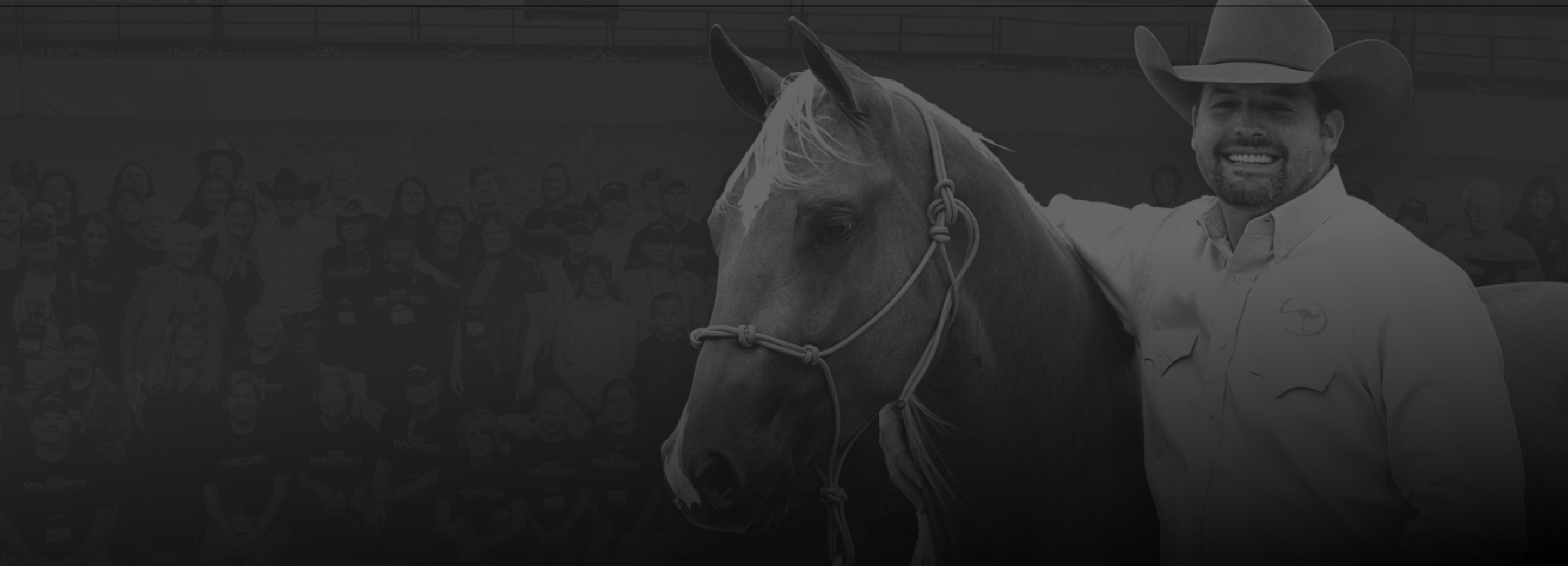
Master Your horsemanship Skills
Like these tips? Join the No Worries Club and hone your skills with thousands of hours of Clinton’s easy, step-by-step method horse training videos.

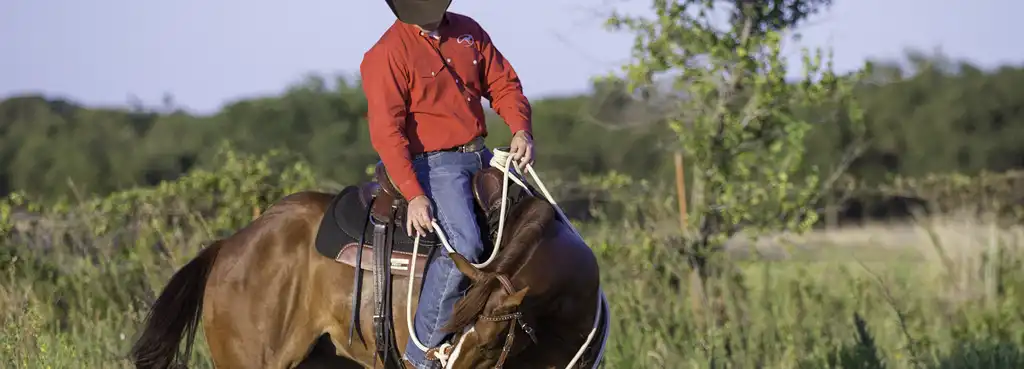
When you work with your horse, you should be a detective, trying to find your horse's holes in his foundation. Here are questions to ask during training.
Read More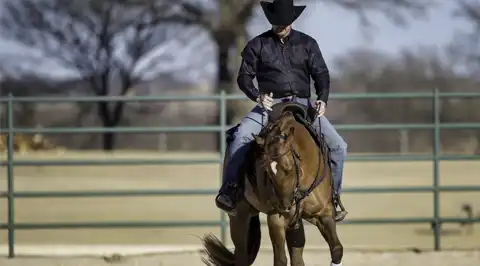
Backing Circles is an exercise to get a horse to be supple, a simple concept but difficult for horses to master. This guide is part 2 of 2.
Read More
Backing Circles is an exercise to get a horse to be supple, a simple concept but difficult for horses to master. This guide is part 1 of 2.
Read More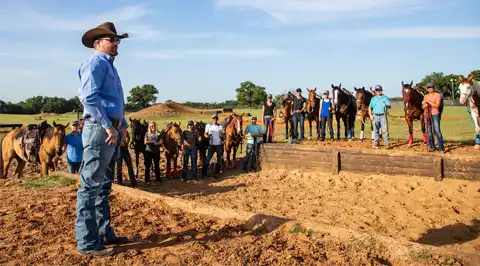
After the Fundamentals groundwork exercises, they are ready to take their groundwork training to the next level with the obstacle course to find deficiencies.
Read More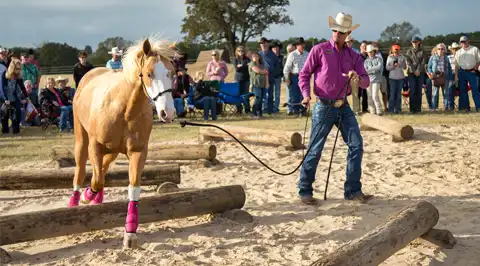
Exercises from the Foal Training Series can be put into practice over obstacles. Here are ways you can use obstacles to further your young horse’s training.
Read More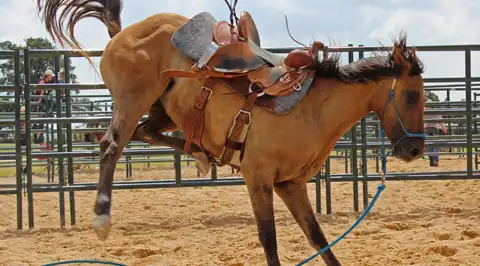
The purpose of the back cinch is to help keep your saddle in place. This guide explains how to adjust the back cinch and why it is important.
Read More
If you want your horse to handle hills well, you have to train him to do so. Clinton Anderson works with a student on how to properly negotiate hills.
Read More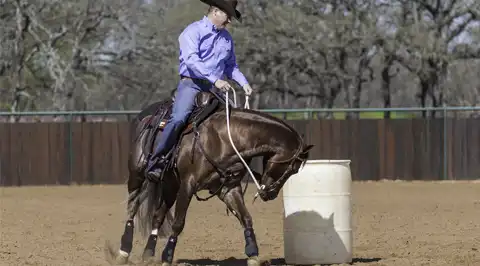
Horse trainer Clinton Anderson shows you how to help your horse shape his body and get him to perform specific maneuvers with these Barrel Suppling Exercises.
Read More
A horse balking about entering or leaving their stall can be dangerous. Here is how to build your horse's confidence about going into and out of the stall.
Read More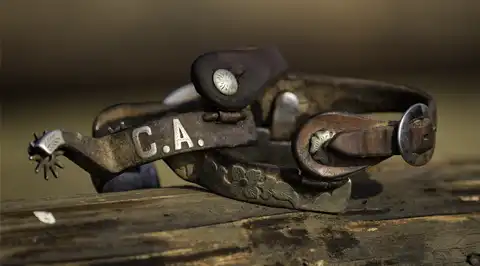
You can get a horse to bend and soften with your bare heels but sometimes spurs can be beneficial. In this guide we show you how to introduce your horse to spurs.
Read More
Bending With Vertical will start to teach the horse how to tuck his nose in and soften while his head and neck are bent, which will help you get a lot more control of his poll.
Read More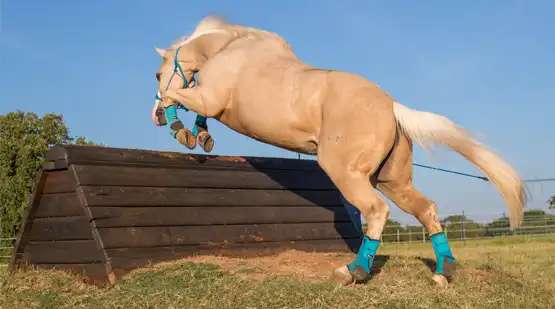
These are the four things that are the most important to horse trainer Clinton Anderson when working with horses. They must never be violated.
Read More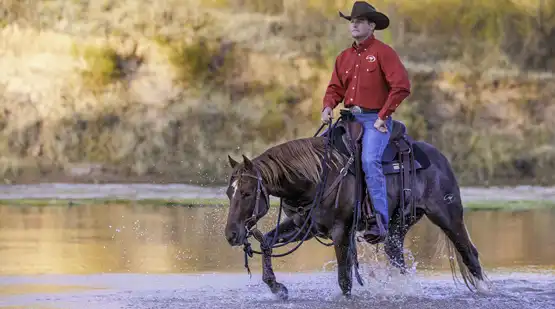
Whether it’s a puddle or a creek, water crossings can be a problem with some horses. But you can take the worry out of water with this step-by-step approach.
Read More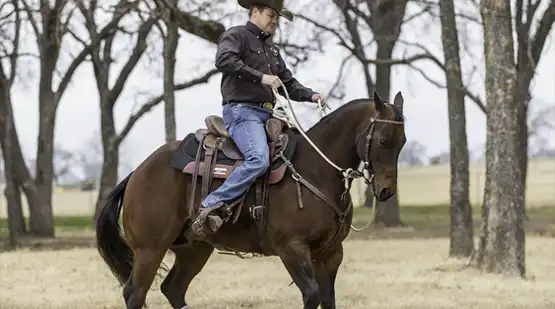
Some horses get in the habit of stopping in the middle of the trail and refusing to go forward. This guide will help you to get your horse moving again.
Read More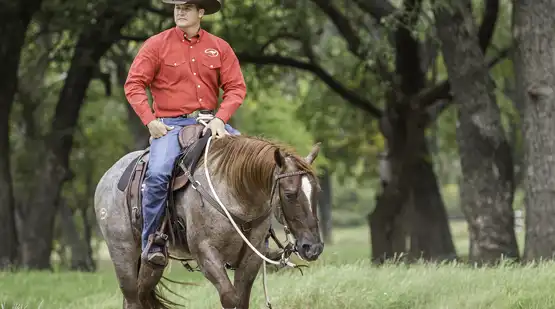
There are two common reasons why your horse lags behind the other horses. In this guide, Clinton Anderson shows you how to speed up a slowpoke.
Read More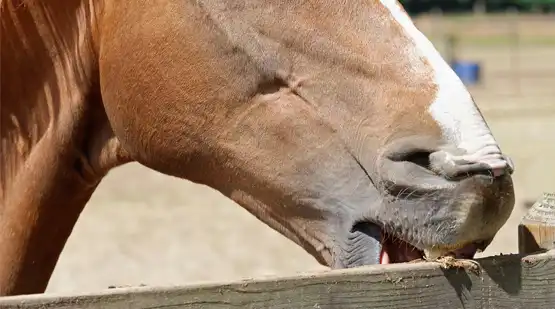
A No Worries Club member asks, "Do you think a horse that cribs is a big problem?" Clinton Anderson answers this and explains cribbing and how to mitigate it.
Read More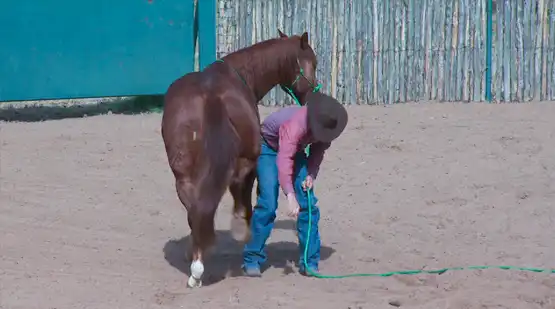
Learn how Clinton Anderson stopped a horse from kicking out violently whenever anyone touched his legs or feet.
Read More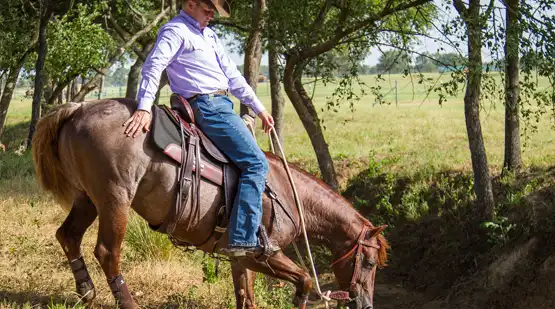
It’s normal for a horse to trip or stumble every once in a while. Just like us, sometimes they take a misstep, especially if the ground is rough or uneven. But if stumbling on the trail is becoming a regular occurrence, your horse is in need of help.
Read More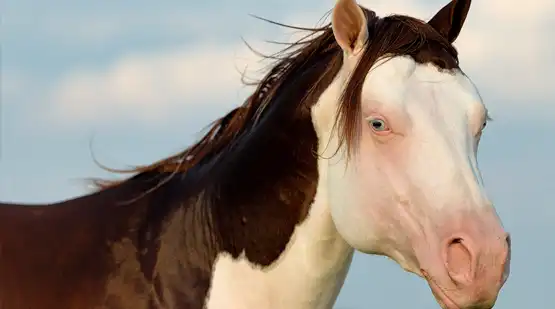
Horse trainer Clinton Anderson Answers a question from a No Worries Club member about deaf horses -- what causes it and will it limit the horse's career.
Read More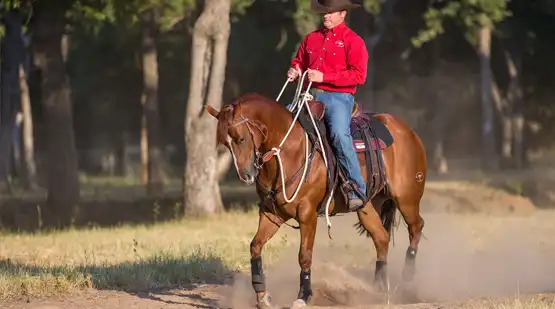
Jigging is a symptom of nervousness or a lack of foundation and can wreck an otherwise pleasurable ride. Read this guide to learn how to stop a jigger.
Read More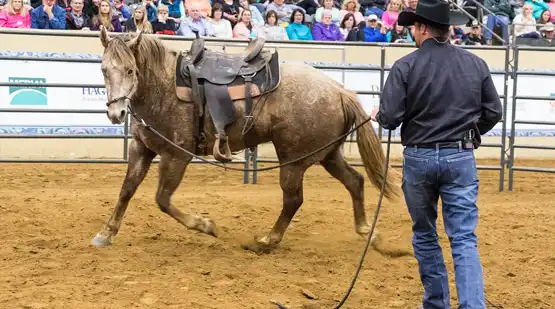
The first saddling of a colt can be dangerous because you’re introducing a new object. In this guide, Clinton shows you how to saddle as smoothly as possible.
Read More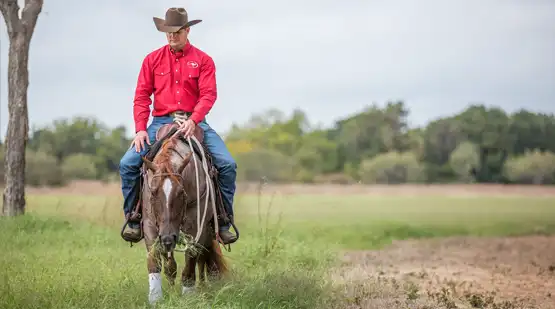
Is your horse too busy eyeing his next meal on the trail rather than paying attention to you? Use these easy steps to put yourself back in control.
Read More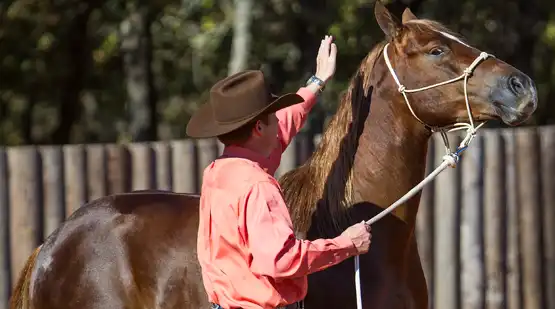
Ear-shy horses make haltering and bridling impossible and dangerous with their head tossing, pulling away and worse. Here’s a guide to taking away their fear.
Read More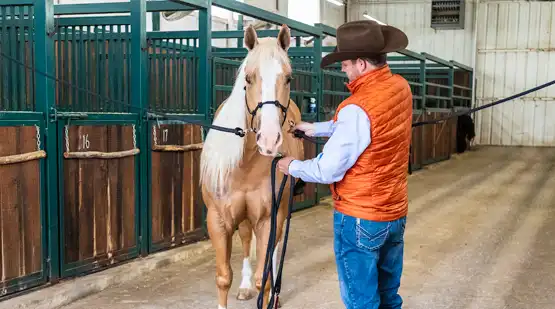
When it comes to horse-tying situations gone wrong, nothing is as scary as a horse reacting in cross-ties. This guide shows you how to properly use cross-ties.
Read More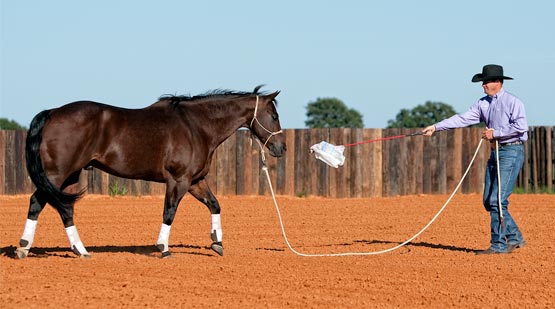
Your job as a horse trainer is to desensitize your horse to as many objects as you can. However, most people unknowingly commit these 5 mistakes.
Read More
Pawing the ground with one front hoof is a sign of impatience and frustration. In this guide, Clinton Anderson helps you put an end to pawing.
Read More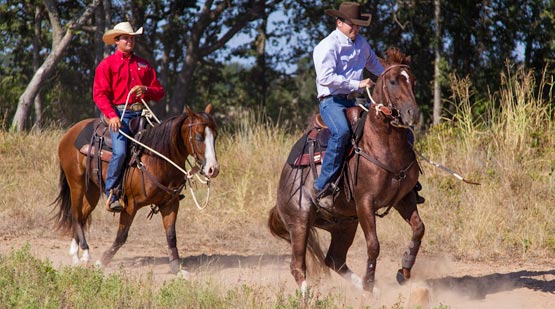
Horses that misbehave in group situations are a hazard. In this guide, Clinton Anderson discusses how to stop your horse from biting and kicking other horses.
Read More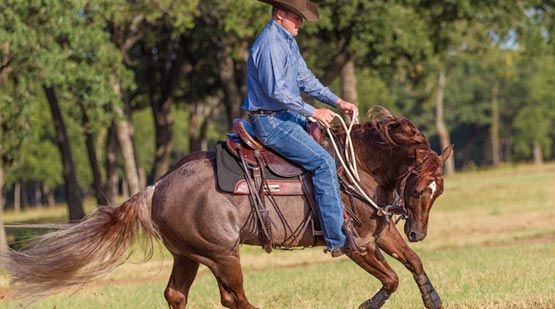
Some horses are naturally hot and nervous, even after training. In this guide, Clinton shows you how to turn your idea to slow down into the horse’s idea.
Read More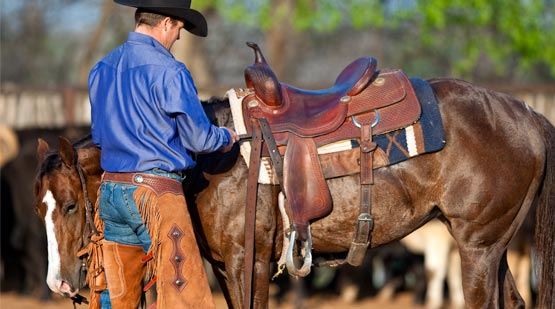
It’s normal for a horse to be reactive when its belly or flank area is squeezed tightly. Clinton explains what makes a horse cinchy and how to saddle your horse safely.
Read More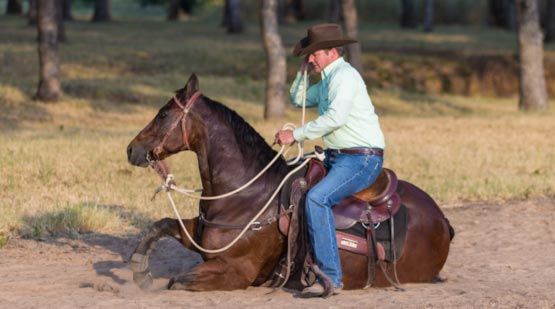
A horse that lies down and rolls riding him is very dangerous. Horse trainer Clinton Anderson teaches you how to stop your horse from lying down on the trail.
Read More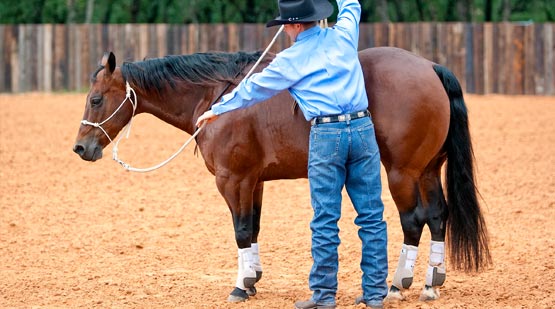
The secret to a soft horse is gaining control of he head and neck, poll, shoulders, ribcage and hindquarters. One important technique is to flex the head and neck.
Read More
It’s important to eventually switch a colt to a bit if you want to get him broke. This article outlines the steps to move a colt from a hackamore to a bridle.
Read More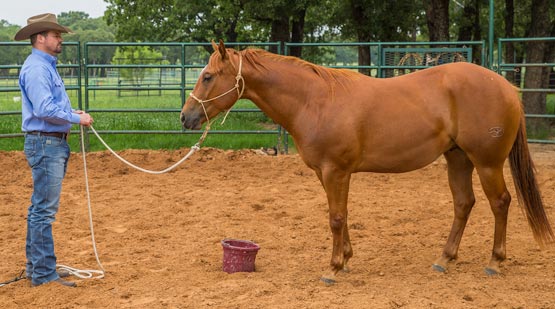
Your horse either thinks about food and getting to it or being respectful. If your horse acts dangerous when you feed him, here's how to correct his behavior.
Read More
Your horse shouldn't push into you, rear or rush past you as you lead him to the pasture. Here, Clinton Anderson shows you how to get your horse to follow you.
Read More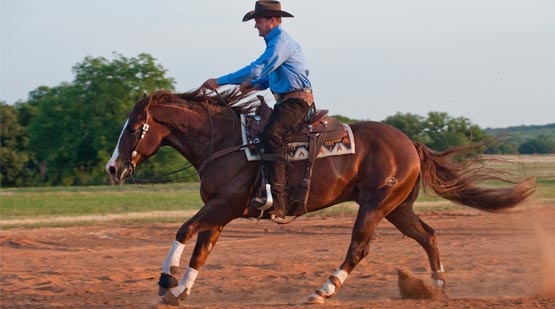
A horse should seem like he is responding to invisible cues from the rider. In this guide you'll learn how to get your horse to respond to the subtlest of cues.
Read More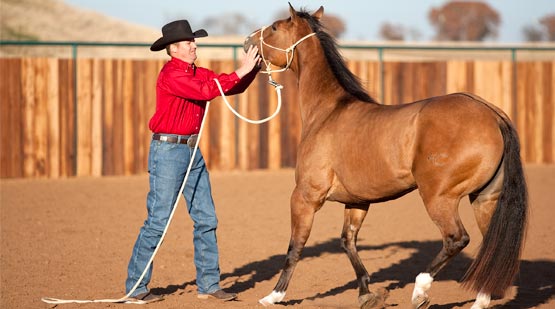
If a horse is bored, he may nibble on things. In this guide, horse trainer Clinton Anderson shows you how to keep your horse's mind busy so he can stop nibbling.
Read More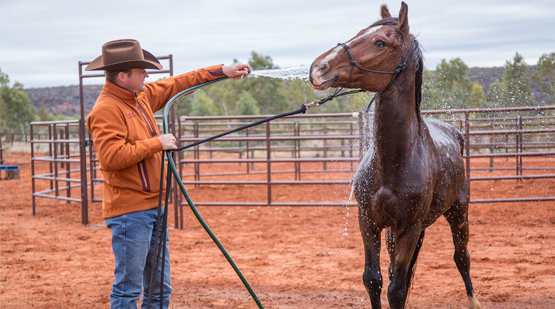
Water is scary to horses and a great way to desensitize them to water is by giving them a bath. In this guide, horse trainer Clinton Anderson shows you how.
Read More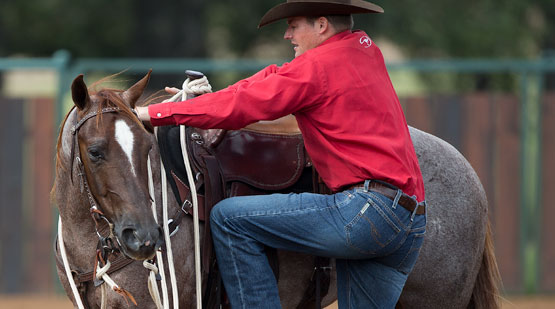
A horse that moves when you slip your foot in the stirrup is dangerous. Clinton Anderson teaches you to keep your horse standing while you mount.
Read More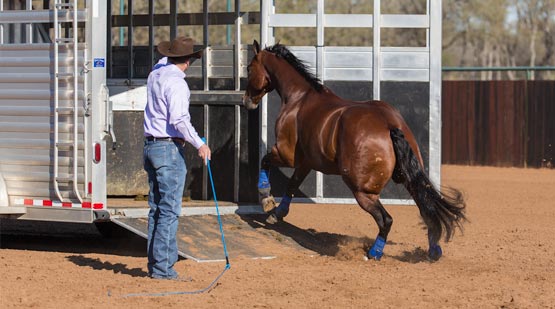
A horse should not be afraid of being trailered. In this guide you will learn how to get your horse comfortable around and in trailers as well as backing out.
Read More
Whether it’s around the head and face or the legs, a lot of horses are frightened of clippers. In this guide, follow these steps and you'll be able to clip your horse without having to fight him.
Read More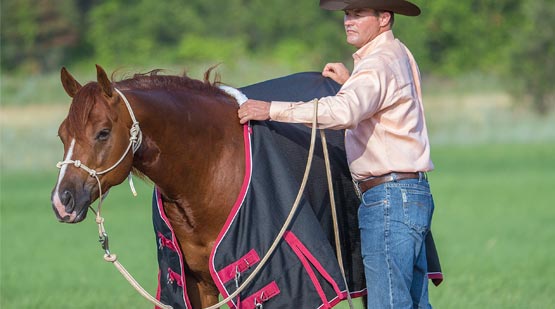
Blanketing a horse can be a struggle because blankets are objects that move and make a noise, which makes them very scary to horses. In this guide, Clinton Anderson shows you Blanketing made easy.
Read More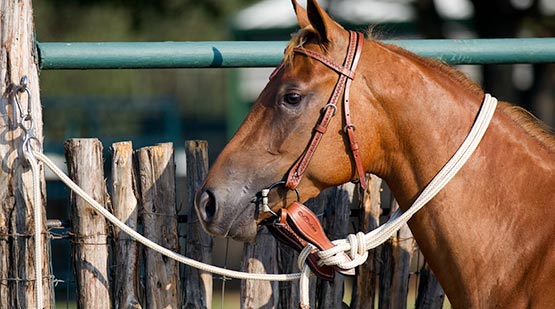
In this guide, Clinton Anderson shows you how to attach mecate reins to the slobber straps and headstall and how to safely tie with mecate reins.
Read More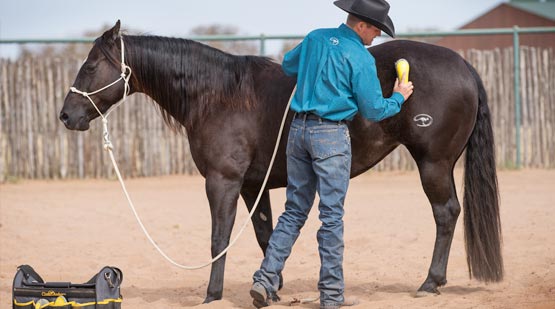
If your horse won't stand still while you groom him then follow Clinton Anderson's instructions in this guide to stop fidgety behavior.
Read More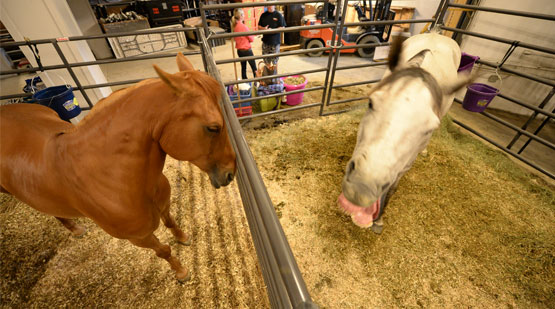
Cranky and disrespectful behavior turns dangerous quickly because you’re trapped in a small space with a 1,000-pound animal. Clinton Anderson covers two common problems associated with horses in stalls and shares his fixes.
Read More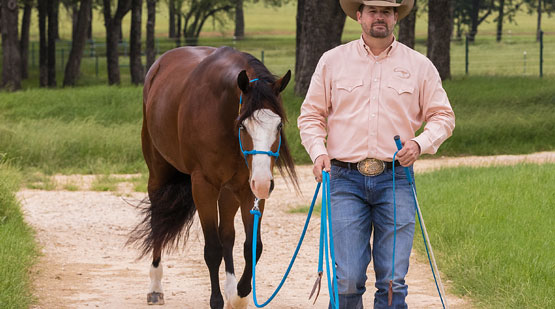
When walking your horse, don't let him lag behind and snatch grass. Horse trainer Clinton Anderson teaches you how to be a leader.
Read More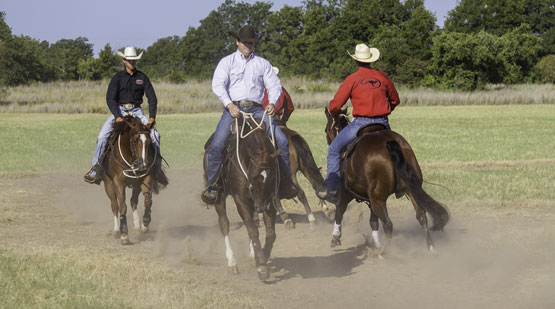
With other horses present, your horse needs to pay attention to you. Horse Trainer Clinton Anderson shows you how to teach him using the cloverleaf exercise.
Read More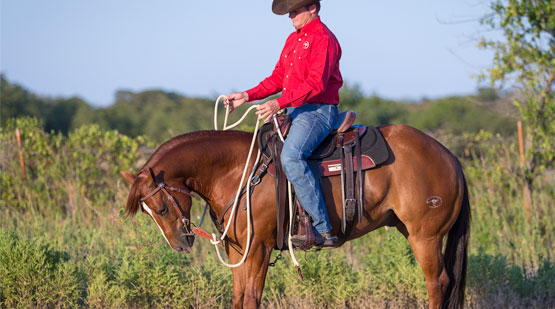
A horse that tosses his head has one of a few things going on. If it's not a dental issue, it's probably one of these 3 possible causes. Here is how to address them.
Read More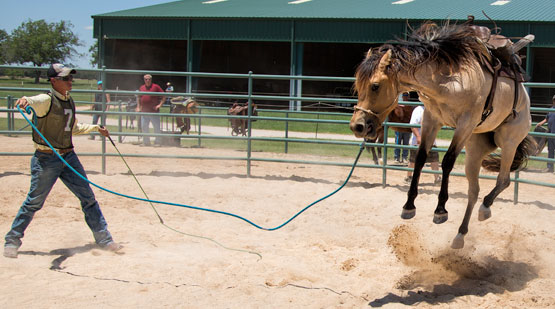
A horse usually bucks out of fear. In this guide, Clinton Anderson teaches you how to respond to and stop a bucking horse.
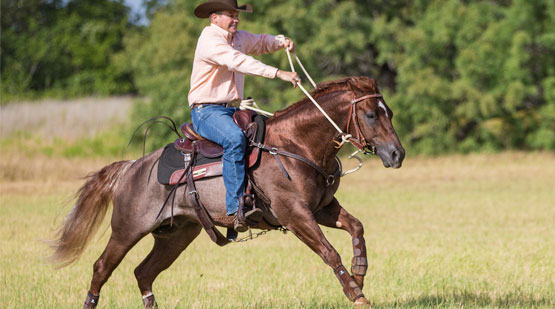
Riding a 1,000-pound animal that's running out of control can be terrifying. In this guide, Clinton Anderson teaches you how to safely stop a horse that bolts.
Read More
Horses are social animals that can make them reluctant to leave the barn. In this article, Clinton Anderson teaches you how to sweeten a barn-sour horse.
Read More
Many riders don't canter their horses enough. In this guide, Clinton Anderson will help you put fear in its place and canter with confidence.
Read More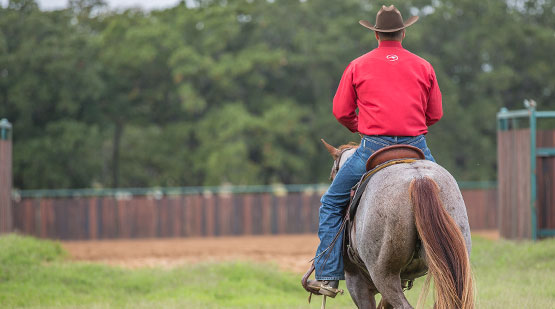
A horse that refuses to go into the arena is frustrating and embarrassing. In this guide, Clinton Anderson helps you reverse your horse's fear of the arena.
Read More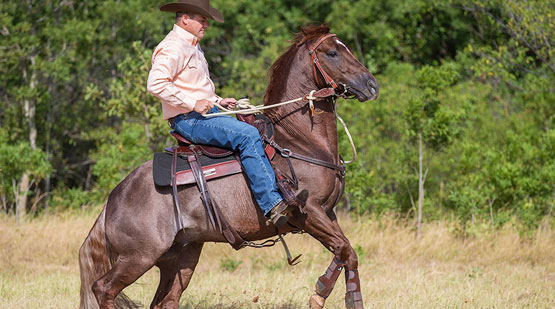
Rearing is a very dangerous situation for both horse and rider, and if left uncorrected it's a problem that only gets worse. This guide will help you correct a horse that rears.
Read More
Few riding experiences are as frightening as being on a thousand pound animal running out of control, but learning a simple exercise and preparing yourself for the unexpected can boost your confidence and put you in control of any situation.
Read More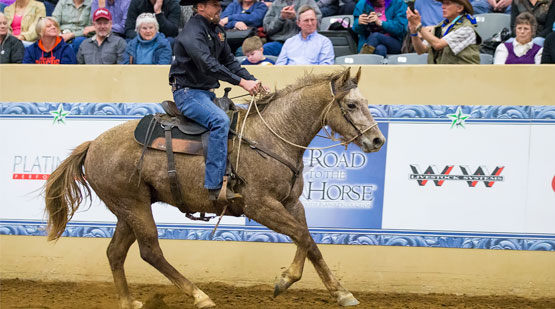
It's important that your horse moves forward at the speed and gait you ask--walk, trot and canter. Here are 4 tips on how to give your horse a good gas pedal.
Read More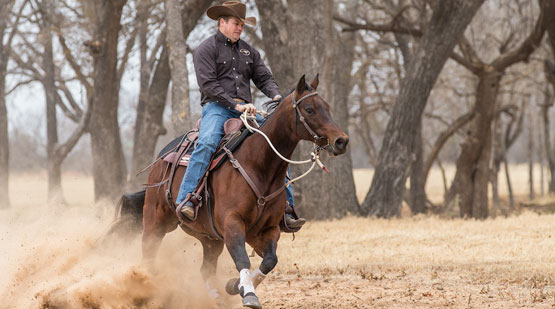
Having a fail-safe approach to handling a spook and remaining in control of the situation will make the incident a minor inconvenience rather than a ride-ruiner.
Read More
Help your horse overcome his fear of fly spray with these steps.
Read More
Here is what can go wrong when you first teach a horse how to yield the forequarters exercise and fixes for each.
Read More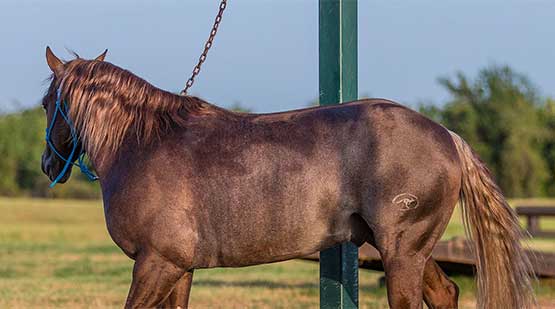
When tying your horse up, safety should be your biggest concern.
Read More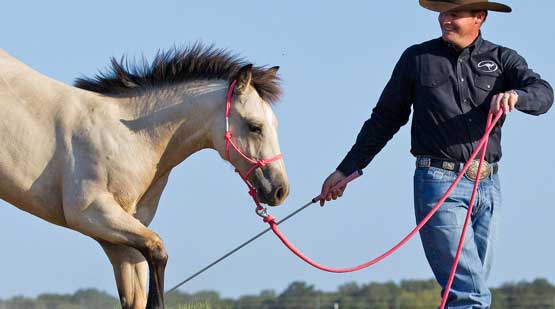
Learn more about horse training and young horse development from Clinton Anderson. Gain tips and insights with our step-by-step guides and how to articles.
Read More
Like these tips? Join the No Worries Club and hone your skills with thousands of hours of Clinton’s easy, step-by-step method horse training videos.